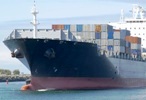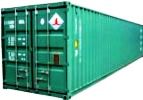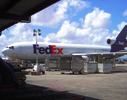| Mubychem Group, established in 1976, is the pioneer manufacturer of Sodium Nitrate, Pharmaceutical, Fragrance & Flavor chemicals in India. Mubychem Group has several manufacturing facilities spread across Gujarat and Mumbai India and world wide contacts and toll manufacturers. We are exporting globally to countries like USA, Canada, Europe, UAE, South Africa, Tanzania, Kenya, Egypt, Nigeria, Uganda, Turkey, Mexico, Brazil, Chile, Argentina, Dubai etc. |
The participating units have one or more accreditations like FDA - GMP approval; ISO-9001 Certified; "REACH"registered; ISO-22000; Kosher Certified;Halal Certified; HACCP. We offer Pure & IP BP USP FCC Food Grade ACS AR Analytical Reagent Grades of Chemicals | |







Sodium Nitrate Manufacturers, MSDS Sheet
Specifications of Sodium Nitrite and Sodiium Nitrate from Manufacturers
Sodium Nitrite BP USP IP ACS Analytical Reagent FCC Grade Manufacturers
Sodium Nitrate MSDS Sheet, Material safety Data Sheet
1.Product Identification
Synonyms: Sodium Nitrate; Chile saltpeter; soda niter; Sodium saltpeter; Nitric acid sodium salt; Nitratine.
CAS No.: 7631-99-4
EINECS: EC Number: 231-554-3
Molecular Weight: 84.99
Chemical Formula: NaNO3
2. Composition/Information on Ingredients
Ingredient: Sodium Nitrate
CAS No.: 7631-99-4
Percent: 97 - 100%
Hazardous: Yes
3. Hazards Identification
Emergency Overview br> DANGER! STRONG OXIDIZER. CONTACT WITH OTHER MATERIAL MAY CAUSE FIRE. HARMFUL IF SWALLOWED OR INHALED. MAY CAUSE IRRITATION TO SKIN, EYES, AND RESPIRATORY TRACT.
OSHA Hazards: Harmful by ingestion, Oxidizer.
HMIS Classification
Health hazard: 1
Flammability: 0
Physical hazards: 3
NFPA Rating
Health hazard: 1
Fire: 0
Reactivity Hazard: 0
Potential Health Effects
Inhalation: It may cause irritation to the respiratory tract.
Ingestion: Harmful if swallowed. It can irritate the digestive system. Ingestion may produce eye disturbances, deafness, speechlessness, and tetanic convulsions.
Skin Contact: It may cause irritation with redness and pain.
Eye Contact: Sodium Nitrate contact may cause irritation, redness, and pain.
Chronic Exposure: No information found for Sodium Nitrate.
Aggravation of Pre-existing Conditions: Workers with a history of kidney or lung disease may be more susceptible to the effects of this substance.
Carcinogenic Effects: Not a reported carcinogen.
Mutagenic Effects: Mutagenic effect in bacteria is observed.
Teratogenic Effects: Not available.
Developmental Toxicity: Not available.
4. First Aid Measures
Always seek medical attention after first aid measures are provided.
Inhalation: Remove to fresh air. If not breathing, give artificial respiration. If breathing is difficult, give oxygen. Get medical attention.
Ingestion: Never give anything by mouth to an unconscious person. Get medical attention.
Skin Contact: Wipe off excess material from skin then immediately flush skin with plenty of water for at least 15 minutes. Remove contaminated clothing and shoes. Get medical attention. Wash clothing before reuse. Thoroughly clean shoes before reuse.
Eye Contact: Immediately flush eyes with plenty of water for at least 15 minutes, lifting lower and upper eyelids occasionally. Get medical attention immediately.
Note to Physician: -.
5. Fire Fighting Measures
Flammability of the Product: The product is not flammable but it is an oxidizer.
Auto-Ignition Temperature: NA.
Flash Points: NA.
Flammable Limits: NA.
Products of Combustion: It emits toxic oxides of carbon and oxides of nitrogen when heated to decomposition.
Fire: Sodium nitrate is an oxidizer.
Explosion: Slightly explosive in presence of heat.
Fire Extinguishing Media: Water spray. Use means suitable for extinguishing surrounding fire. Water spray, dry chemical, alcohol foam, or carbon dioxide.
Special Information In the event of a fire, wear full protective clothing and NIOSH-approved self-contained breathing apparatus with full face piece operated in the pressure demand or other positive pressure mode. At high temperatures or when moistened under fire conditions, it may produce toxic or irritating fumes.
It may accelerate burning when involved in a fire. Increases the flammability of any combustible material. May ignite Combustibles (wood, paper, clothing, etc.). Flames up when heated to 540 deg. C. Mixture with charcoal ignites on heating. Contact with combustible or organic materials may cause fire.
It will react explosively with hydrocarbons. Interaction of nitrates when heated with amidosulfates (sulfamates) may become explosively violent owing to liberation of dinitrogen oxide and steam. Mixtures of sodium nitrate with powdered aluminum or its oxide were reported to be explosive. Mixtures of sodium nitrate and barium thiocyanate may explode. Mixture with sodium nitrate and powdered antimony explode. Mixture of sodium nitrate and sodium thiosulfate or sodium phosphinate explode.
6. Accidental Release Measures
Small Spill: Avoid dust formation. Avoid breathing dust. Ensure adequate ventilation. Use appropriate tools to put the spilled solid in a convenient waste disposal container. Finish cleaning by spreading water on the contaminated surface and dispose of according to local and regional authority requirements.
Large Spill: Do not let the product enter drains. Use a shovel to put the material into a convenient waste disposal container. Finish cleaning by spreading water on the contaminated surface and allow evacuating through the sanitary system.
7. Handling and Storage
Do not breathe dust. Wear suitable protective clothing. In case of insufficient ventilation, wear suitable respiratory equipment.
Avoid contact with skin and eyes. Avoid formation of dust and aerosols. Wash hands thoroughly after handling. Provide appropriate exhaust ventilation at places where dust is formed. If you feel unwell, seek medical attention.
Keep Sodium nitrate in a tightly closed container, stored in a cool, dry, ventilated area. Protect against physical damage or contact with oxidizing material and combustible substances.
8. Exposure Controls/Personal Protection
Airborne Exposure Limits: None established.
Ventilation System: A system of local and/or general exhaust is recommended to keep employee exposures as low as possible. Local exhaust ventilation is generally preferred because it can control the emissions of the contaminant at its source, preventing dispersion of it into the general work area.
Personal Respirators (NIOSH Approved): For conditions of use where exposure to dust or mist is apparent and engineering controls are ot feasible, a particulate respirator may be worn. For emergencies or instances where the exposure levels are not known, use a full-face positive-pressure, air-supplied respirator.
Skin Protection: Wear protective gloves and clean body-covering clothing.
Eye Protection: Use chemical safety goggles and/or full face shield where dusting or splashing of solutions is possible. Maintain eye wash fountain and quick-drench facilities in work area.
Other Control Measures: Maintain good housekeeping in work area. Dust deposits on floors and other surfaces may pick up moisture and cause the surfaces to become slippery and present safety hazards. Handle in accordance with good industrial hygiene and safety practice. Wash hands after handling.
9. Physical and Chemical Properties
Appearance: Sodium nitrate is white crystals or powder or granules.
Odor: None
Solubility: Readily soluble in water
pH: 6-9 at 1% solution at 25 C (77F)
Density: 2.26 gm/cc
Molecular Weight: 84.99
Molecular Formula: NaNO3
% Volatiles by volume @ 21C (70F): 0
Boiling Point: Decomposes at 380C
Melting Point: 307C
Vapor Density (Air=1): No information found
Vapor Pressure (mm Hg): No information found
Evaporation Rate (BuAc=1): No information found
10. Stability and Reactivity
Stability: Sodium nitrate is stable under ordinary conditions of use and storage.
Hazardous Decomposition Products: It emits toxic oxides of nitrogen along with sodium oxide when heated to decomposition.
Hazardous Polymerization: Will not occur.
Incompatibilities: Strong acids, Strong reducing agents, powdered metals, Organic materials. Avoid all combustible materials and metals. Contact with barium rhodanide, boron phosphide, cyanides, sodium thiosulfate, sodium hypophosphite, sulfur plus charcoal, powdered aluminum and aluminum oxide may cause an explosion.
Conditions to Avoid: Moisture, Heat, Incompatibles.
11. Toxicological Information
Routes of Entry: Inhalation, Ingestion, Contact.
Toxicity to Animals:
Oral, rabbit: LD50 = 2680 mg/kg;
Oral, rat: LD50 = 1267 mg/kg;Special
Remarks on Toxicity to Animals: Not available.
Carcinogenic Effects: Not a reported carcinogen.
Mutagenic Effects: Mutagenic for bacteria and/or yeast. May cause damage to blood.
Teratogenic Effects: Not available.
Developmental Toxicity: Not available.
Chronic Effects on Humans: No information found.
Other Toxic Effects on Humans: Hazardous in case of skin contact (irritant), of ingestion, of inhalation.
Special Remarks on Chronic Effects on Humans: -
Special Remarks on other Toxic Effects on Humans: -
Acute Potential Health Effects:
Inhalation: Sodium nitrate causes irritation to the respiratory tract and mucus membrane.
Ingestion: Harmful if swallowed. May cause irritation to the gastrointestinal tract.
Skin Contact: Sodium nitrate causes irritation to skin.
Eye Contact: Causes irritation redness and pain.
Chronic Exposure: NA.
12. Ecological Information
Environmental Toxicity:
Toxicity to fish static test LC50 - Gambusia affinis (Mosquito fish) - 6,650 mg/l - 96 h
Fathead minnow: GT 1000 mg/L 96-h LC50; Water flea: GT 1000 mg/L LC50
Toxicity to daphnia and other aquatic invertebrates: EC50 - Daphnia magna (Water flea) - 6,000 mg/l - 24 h
Biodegradability: -
BOD5 and COD: Not available.
Environmental Fate: No information found. The product itself and its products of degradation are not toxic. This chemical is readily biodegradable and is not likely to bio-concentrate.
13. Disposal Considerations
Whatever cannot be saved for recovery or recycling should be managed in an appropriate and approved waste disposal facility. Processing, use or contamination of this product may change the waste management options. State and local disposal regulations may differ from federal disposal regulations. Dispose of container and unused contents in accordance with federal, state and local requirements. Small amounts of this material may be suitable for sanitary sewer or trash disposal.
14. Transport Information
DOT (USA)
UN-Number: 1498 Class: 5.1 Packing group: III
Proper shipping name: Sodium nitrate
Marine pollutant: No
Poison Inhalation Hazard: No
IMDG
UN-Number: 1498 Class: 5.1 Packing group: III EMS-No: F-A, S-Q
Proper shipping name: Sodium nitrate
Marine pollutant: No
IATA
UN-Number: 1498 Class: 5.1 Packing group: III
Proper shipping name: Sodium nitrate
15. Regulatory Information
OSHA Hazards: Harmful by ingestion, Oxidizer.
SARA Codes: CAS # 7631-99-4: flammable.
SARA 302: No chemicals in this material are subject to the reporting requirements of SARA Title III, Section 302.
Section 313:
Sodium nitrate
CAS-No.: 7631-99-4
SARA 311/312 Hazards: Reactivity Hazard, Acute Health Hazard.
TSCA: CAS# 7631-99-4 is on the TSCA Inventory.
Health & Safety Reporting List: None of the chemicals are on the Health & Safety Reporting List.
Chemical Test Rules: None of the chemicals in this product are under a Chemical Test Rule.
Section 12b: None of the chemicals are listed under TSCA Section 12b.
TSCA Significant New Use Rule: None of the chemicals in this material have a SNUR under TSCA.
CERCLA Hazardous Substances and corresponding RQs: None of the chemicals in this material have an RQ.
Clean Air Act:
This material does not contain any hazardous air pollutants.
This material does not contain any Class 1 Ozone depletors.
This material does not contain any Class 2 Ozone depletors.
Clean Water Act:
None of the chemicals in this product are listed as Hazardous Substances under the CWA.
None of the chemicals in this product are listed as Priority Pollutants under the CWA.
None of the chemicals in this product are listed as Toxic Pollutants under the CWA.
California Prop 65:
This product does not contain any chemicals known to State of California to
cause cancer, birth defects, or any other reproductive harm.
Massachusetts Right To Know Components:
Sodium nitrate
CAS-No.
7631-99-4
Pennsylvania Right To Know Components:
Sodium nitrate
CAS-No.
7631-99-4
New Jersey Right To Know Components:
Sodium nitrate
CAS-No.
7631-99-4
EINECS: EC Number: 231-554-3
European Labeling in Accordance with EC Directives
Hazard Symbols:
XN O
Risk Phrases:
R 22 Harmful if swallowed.
R 8 Contact with combustible material may cause fire.
Safety Phrases:
S 17 Keep away from combustible material.
S 24/25 Avoid contact with skin and eyes.
S 3/7/9 Keep container tightly closed in a cool, well-ventilated place.
S 36/37 Wear suitable protective clothing and gloves.
WGK (Water Danger/Protection)
CAS# 7631-99-4: 1
Canada - DSL/NDSL
Canadian WHMIS Classifications: C, D2B
CAS# 7631-99-4 is listed on Canada's DSL List.
This product has a WHMIS classification of C, D2B.
CAS# 7631-99-4 is listed on Canada's Ingredient Disclosure List.
Australian Hazchem Code: 1(T)
Poison Schedule: None
16. Other Information
Disclaimer:
******************************
Our company provides this Sodium nitrate MSDS sheet in good faith but makes no representation as to its comprehensiveness or accuracy. This Sodium nitrate MSDS sheet is intended only as a guide to the appropriate precautionary handling of the material by a properly trained person using this product. The above information has been compiled from various sources and has the possibility of discrepancy and being out-dated information. Individuals receiving the information must exercise their independent judgment and do further search in determining its appropriateness for a particular purpose. In no case shall our company be liable to loss or damages by the product user.
******************************
Sodium Nitrate Manufacturers:
MUBYCHEM GROUP
CHINCHBUNDER, MUMBAI 400009, INDIA
TEL: (OFFICE) 91-22-23774610, 91-22- 23723564. 91-22-23728264
e-mail: anmol@pcmenergy.com

Copyright and Usual Disclaimer is Applicable.
Global or International Sodium Nitrate and Sodium Nitrite IP BP USP NF ACS FCC Food Grade Suppliers, Exporters, Importers, Manufacturers
If I give you “My Word” Nobody can undo it.
If I sign an “Agreement” my Lawyer will undo it
Perfection is made up of small thing but it is not small.

